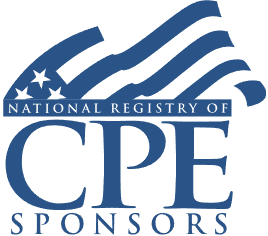ERISA 103(a)(3)(C) Audit Standard: Limited Scope Audit and Reducing Disclaimers
SAS 136: Audit Performance and Disclosure Duties, Evaluating Qualified Investment Information

Welcome! Strafford is now BARBRI! The expert courses you know from the trusted global leader in legal education.
Course Details
- smart_display Format
On-Demand
- signal_cellular_alt Difficulty Level
Intermediate
- work Practice Area
Accounting
- event Date
Wednesday, October 28, 2020
- schedule Time
1:00 p.m. ET./10:00 a.m. PT
- timer Program Length
110 minutes
-
BARBRI is a NASBA CPE sponsor and this 110-minute webinar is accredited for 2.0 CPE credits.
This course will provide audit professionals and employee benefit plan (EBP) sponsors with a critical analysis of AICPA Statements on Audit Standard (SAS) 136, with a particular focus on ERISA Section 103(a)(3)(C) audit rules and the alteration of the prior limited scope audit provisions. The panel will provide an in-depth discussion of the additional requirements imposed on auditors and plan sponsors.
Faculty

Ms. Kanter has nearly 20 years of accounting experience, including audit and review services for privately held companies in various industries.

Ms. Nahorney specializes in the planning, designing and auditing of qualified retirement plans and employee welfare plans for privately held businesses.
Description
In 2019, the AICPA issued SAS 136, which made significant changes to virtually every aspect of audits of EBPs covered by ERISA. The most significant impact was the inclusion of Section 103(a)(3)(C) audit rules, which increases the auditor's responsibilities in performing audits. In April 2020, the AICPA Auditing Standards Board voted to delay implementation by one year due to the ongoing coronavirus pandemic.
ERISA Section 103(a)(3)(c) permits a plan sponsor to request a limited scope audit of the ERISA plan, in which plan management may elect to exclude from the audit certain investment information held and certified to by a "qualified institution" such as a bank or insurance carrier. In such a limited scope audit, auditors issue a disclaimer of opinion on the financial statements. However, as the number of limited scope audits has increased, DOL studies have found a very high rate of audit deficiencies in limited scope audits.
In response to these deficiencies, the AICPA created the ERISA Section 103(a)(3)(C) audit provisions to impose duties on auditors performing engagements in which plan management elects to exclude plan investment information. Instead of issuing disclaimers, auditors must issue an opinion that excludes the certified assets and must obtain and evaluate management representations as to which investment information is certified, and that the entity issuing the certification is a qualified institution under DOL regulations.
Listen as our experienced panel provides a critical analysis of the ERISA Section 103(a)(3)(c) audit rule and the changes to the "limited scope audit" allowances.
Outline
- Statement on Auditing Standards (SAS) 136
- ERISA Section 103(a)(3)(C) audit as a significant change to prior "limited scope audit"
- Duties to obtain management representations regarding investment information scope and certifying entity
- Assessing disclosures related to certified investment information
- Duties when an auditor becomes aware of deficiencies, inaccuracies, or incompleteness of certified investment information
- Duties to render an opinion on financial statement matters not directly relating to the certified investment information, including non-certified investment information and disclosures
- Other SAS 136 provisions
- Engagement acceptance requirements
- Provisions on risk assessment
- Duty to communicate with management or parties responsible for plan governance
- Receipt and examination of "substantially complete" Form 5500 before completion of a report
- Performance procedures
- The requirement to obtain management representations
- Implementation of new standards
Benefits
The panel will discuss these and other critical issues:
- How the ERISA Section 103(a)(3)(C) audit structure changes the practice of "limited scope audits" where plan managment elects to have certified plan investment information excluded from the plan audit
- Limited circumstances under which an auditor may issue a disclaimer and what information the auditor must obtain
- Auditor duties to examine the substantially complete Form 5500 as part of the audit
NASBA Details
Learning Objectives
After completing this course, you will be able to:
- Identify the requirements for obtaining information from plan management on certification of plan investment information and the certifying entity
- Recognize scenarios where an auditor may be required to state an opinion on investment information not certified by a qualified institution
- Discern areas where an auditor has previously been able to issue a disclaimer but will have to render an opinion under an ERISA Section 103(a)(3)(C) audit
- List SAS 136 changes to engagement acceptance, management communications, and audit reporting
- Field of Study: Auditing
- Level of Knowledge: Intermediate
- Advance Preparation: None
- Teaching Method: Seminar/Lecture
- Delivery Method: Group-Internet (via computer)
- Attendance Monitoring Method: Attendance is monitored electronically via a participant's PIN and through a series of attendance verification prompts displayed throughout the program
- Prerequisite: Three years+ business or public firm experience at mid-level within the organization, auditing employee benefit plans or supervising others conducting employee benefit plan audits. Specific knowledge of limited scope audit processes as they currently exist under ERISA Section 103(a)(3)(C); familiarity with SOC reports, documentation of internal controls, and common noncompliance issues.

Strafford Publications, Inc. is registered with the National Association of State Boards of Accountancy (NASBA) as a sponsor of continuing professional education on the National Registry of CPE Sponsors. State boards of Accountancy have final authority on the acceptance of individual courses for CPE Credits. Complaints regarding registered sponsons may be submitted to NASBA through its website: www.nasbaregistry.org.
Unlimited access to premium CLE courses:
- Annual access
- Available live and on-demand
- Best for attorneys and legal professionals
Unlimited access to premium CPE courses.:
- Annual access
- Available live and on-demand
- Best for CPAs and tax professionals
Unlimited access to premium CLE, CPE, Professional Skills and Practice-Ready courses.:
- Annual access
- Available live and on-demand
- Best for legal, accounting, and tax professionals
Unlimited access to Professional Skills and Practice-Ready courses:
- Annual access
- Available on-demand
- Best for new attorneys
Related Courses

Accounting for Cryptocurrency and Digital Assets: New FASB Guidelines, Financial Reporting and Disclosures
Thursday, August 28, 2025
1:00 p.m. ET./10:00 a.m. PT
Recommended Resources
Gain a Competitive Edge Through Efficient CPE Strategies
- Learning & Development
- Business & Professional Skills
- Career Advancement